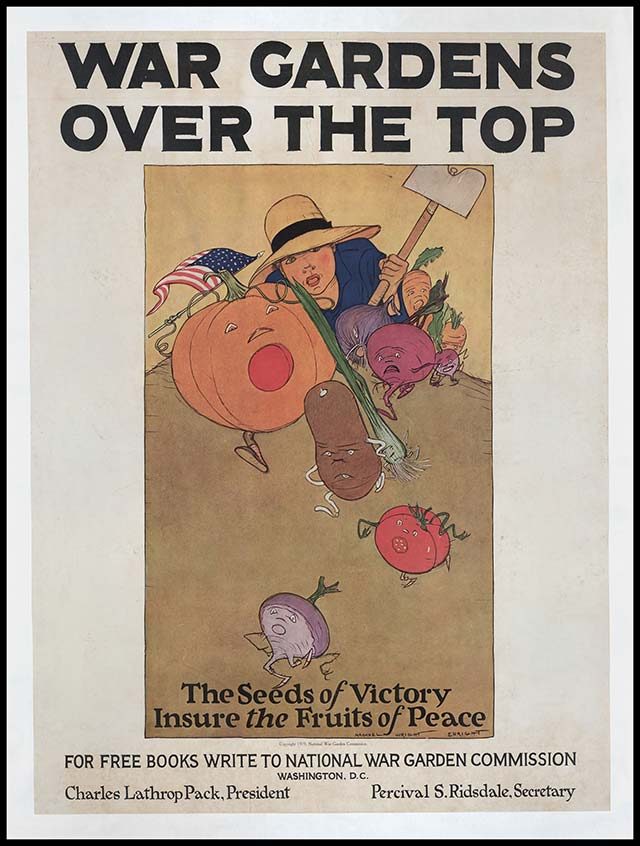
Grow-your-own gardens
Many new inventions, movements, and cultural advances came out of necessity, like the “grow-your-own” movement, which has had a resurgence in recent years. “In WWI, the U.S. Food Administration regulated food production to support the armed forces and allies,” says Doran Cart, Senior Curator of The National World War I Museum and Memorial in Kansas City, Missouri. “To conserve food, Americans were encouraged to be self-sustainable with practices such as growing their own food.” The regulation also lead to new initiatives like canning vegetables to preserve food, he says. “If Americans weren’t fighting for the war, they were working for the war, and growing their own food was one way to contribute,” Cart says. In today’s world, we look to grow-your-own and farm-to-table as a way to reduce food production costs, eat healthier, and support local farmers. Betcha never learned these fascinating facts about America while you were in school.
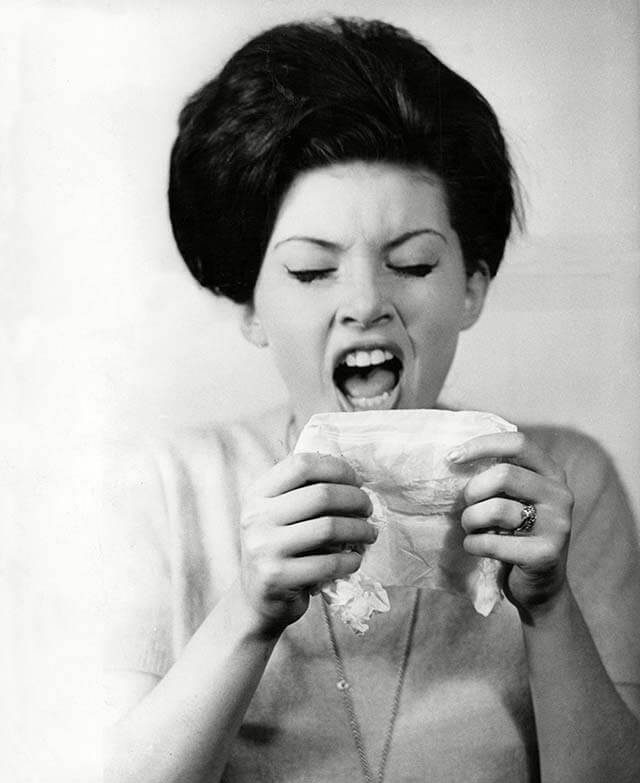
Kleenex
How bad is it to reuse a tissue? Doctors had that very same thought when they decided to use gas mask filters as disposable handkerchiefs after the war. “Items created for the war often had to be repurposed following the war, and one of those items is Kleenex, which was actually the crepe paper used in the filters of gas masks,” says Jonathan Casey, Director, Archives and Edward Jones Research Center, of The National World War I Museum and Memorial. “During the influenza epidemic following the war, [paper goods company] Kimberly-Clark repurposed the paper as a disposable product for people to sneeze into and limit the spread of bodily fluids.” Later given the brand name “Kleenex,” we now use the word to refer to any facial tissue. Here are more everyday items that have hidden meanings and unusual origins.
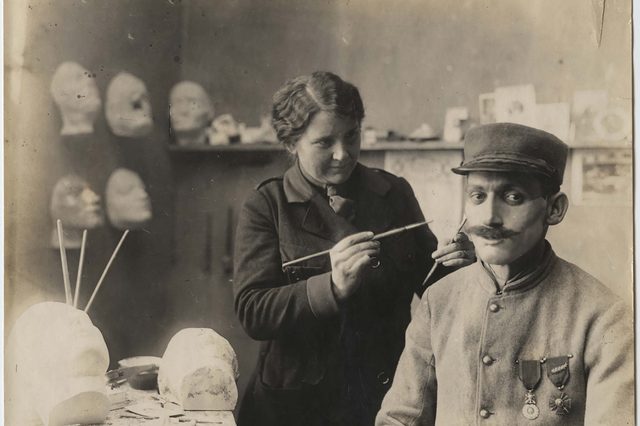
Plastic surgery
Back in World War I, plastic surgery emerged as a way to treat soldiers with facial injuries. “The modern idea of plastic surgery and the techniques used today originated in WWI due to the injuries from the use of explosives such as artillery, machine guns, and chemicals,” Cart says. “Dr. Harry Gillies developed the techniques to rebuild faces after so many noses were lost, and performed over 11,000 plastic surgeries on the wounded during the war.” In addition, sculptors created partial masks for those with facial disfigurements to help restore a more typical appearance. “These advances were made very quickly in this field because of an effort to make it seem like what had happened to these soldiers was not so horrible,” Cart says.
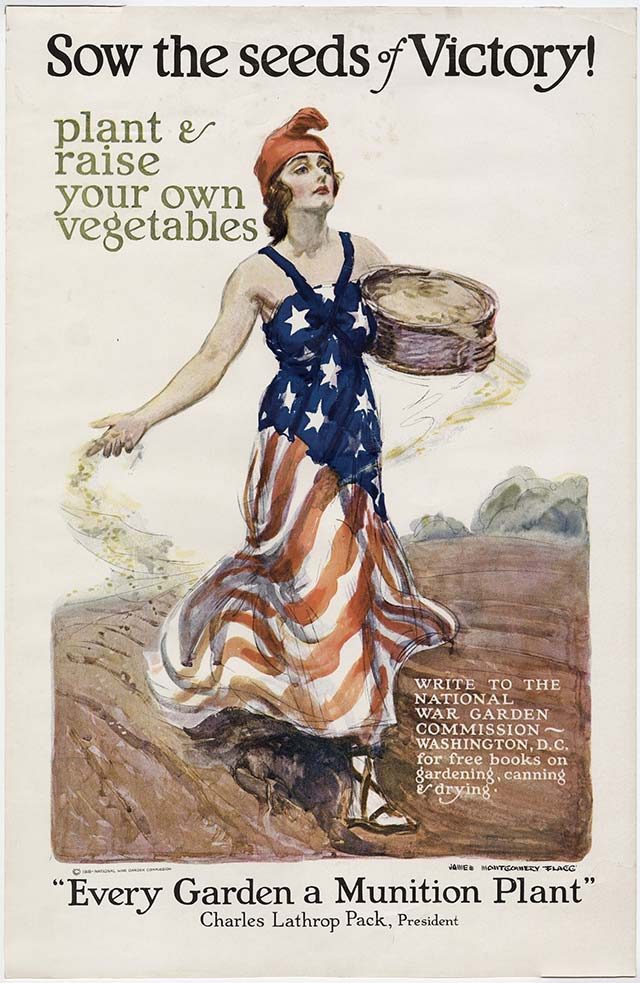
Meatless Mondays
We’re now encouraged to try a meatless Monday for its environmental and health benefits, but the idea started in World War I. Meat was conserved for soldiers, so nuts, legumes, and cheese were proposed as alternate ways to get protein, according to the National WWI Museum’s digital exhibition War Fare. “This was a real opportunity for nutrition scientists to talk about the fact that different foods contain nutritive components—that it wasn’t just steak but proteins and fats, and you could get those same proteins and fats from eating lentils or nuts,” Helen Veit, assistant professor of history at Michigan State University, says in the exhibition. “That was a very new way of thinking about food.” Peanut butter became a popular food to serve kids—and many recipes for peanut butter soon sprang up (peanut butter soup, anyone?). Soybeans were also becoming a more common ingredient. In addition, oils and margarine were substituted for animal fat in cooking, Cart says.
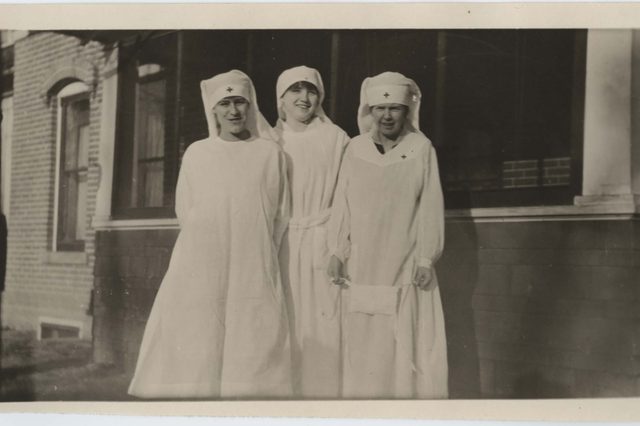
Kotex
One hundred years ago, it wasn’t considered proper to talk about your period. But clever WWI nurses dealt with their time of the month in such a way that impacted how feminine products were later created and sold. “During the war, army nurses did not have sanitary products provided to them,” Casey says. “They found that the Cellucotton bandages made of wood pulp to treat wounds were five times more absorbent than other bandages, and used them as a makeshift sanitary napkin. After the war was over, Kimberly-Clarke executives were looking for ways to use the leftover Cellucotton, and marketed them as sanitary napkins.” The name “Kotex” came from the “cotton-like texture” of the disposable pads, which forever changed the way women handle their periods. Talk about girl power! Here are 16 things you never knew were invented by women.
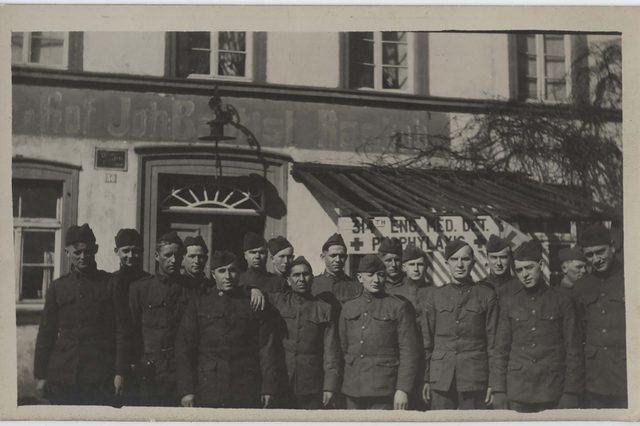
Contraception
In World War I days, the popularization of reliable contraception was for health purposes. “Venereal disease [such as gonorrhea and syphilis] disabled many soldiers, and manpower was lost, creating a strong incentive to manage a contraception effort,” Cart says. Antibiotics had not yet been discovered to treat such infections, so “prophylactic stations” were set up to distribute condoms. But the issue still wasn’t openly talked about. “The actual idea of contraception was not really discussed in the military,” Cart says. “One of the prophylactics that were available in France were called ‘French Letters.’ [For discretion] soldiers could go into a pharmacy and ask for a French Letter that came in a little envelope.”
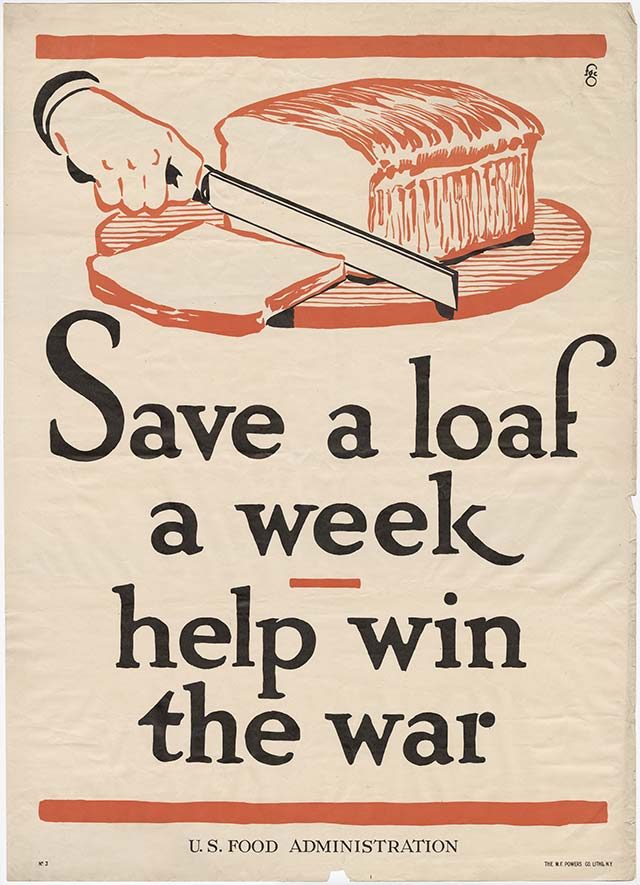
Gluten-free diets
Today we might not have even had the idea to avoid gluten if it hadn’t been for World War I. In another attempt to conserve food—in this case, wheat—those on the home front were urged to look to alternate sources. “Americans were encouraged to choose ‘wheatless’ days, a concept that many people still practice today for various reasons,” Casey says. “Americans began to substitute with other grains, potatoes, flour [such as oat, rye, or barley], and corn.” Although not strictly gluten-free (rye and barley do contain gluten), avoiding wheat was a step in that direction. Check out how some of your favorite foods were created by pure accident.
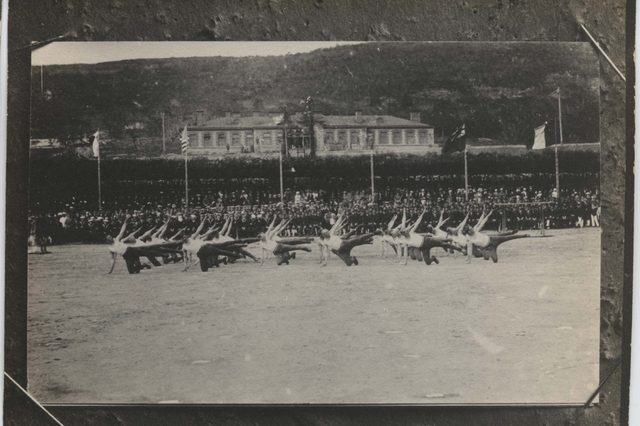
Pilates
The fitness trend “Pop Pilates” may be one of the new ways to work out, but in 1917, one man started it all. “A German physical trainer, Joseph Hubertus Pilates, came up with rehabilitation exercises to help Austrian soldiers with therapy after injuries,” Casey says. “It was always really seen as a rehabilitation method until modern times.” To allow those who were confined to their beds to exercise, Pilates used springs and straps from the beds as resistance training. A German living in Britain who was interned during the war, Pilates later moved to America and opened an exercise studio. His method’s popularity has kept it fresh even in modern times.

Vitamins
Back in the day, vitamins themselves were considered a myth. During World War I, scientists started to figure out how these different nutritional components could benefit soldiers’ health. “The concept of vitamins—however, not yet in the form of supplements—grew during this period, when medical research began to recognize that you can receive vitamins from a balanced diet and nutrition,” Cart says. “This understanding was applied to food in the trenches, including the frequent use of tomatoes, which was added to ‘slum’ [a concoction of beef, potatoes, onion, and tomatoes], a main dish in field kitchens.” Learn about the accidents that created products that changed the world forever.
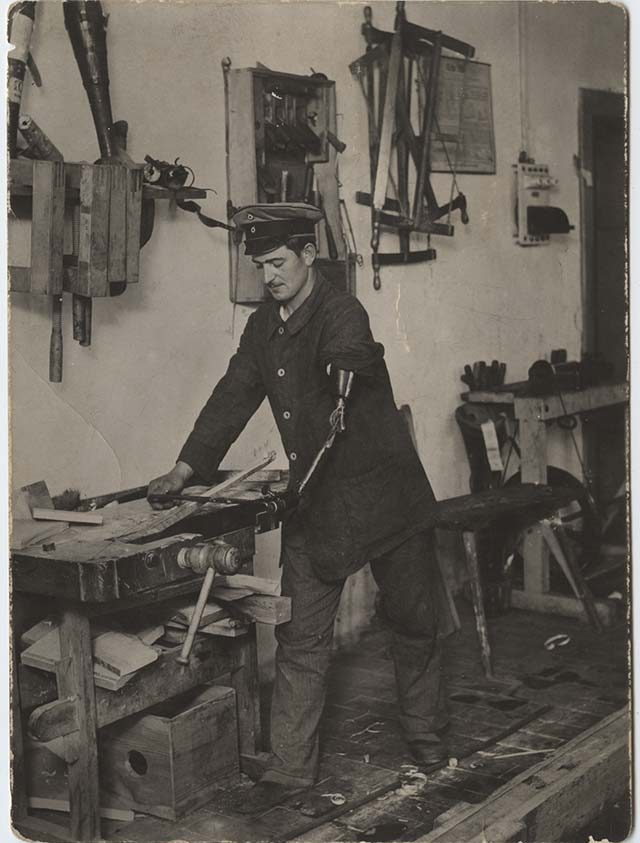
Prosthetics
Amputees can achieve anything, but prosthetics often help make their lives a little easier. Like plastic surgery, prosthetics were created during WWI to assist soldiers with devastating injuries. “The Germans were leaders in prosthetics, which did exist before the war but were advanced during and after the war because of the substantial number of limbs that were lost,” Casey says. “The increase in casualties resulted in developing more functional limbs, specifically for arms, so that soldiers could be more accepted and welcomed back into society.” Although not as comfortable or well-made as those today, prosthetics allowed soldiers to reintegrate into civilian life, for example by being hired by the labor department, Casey says.
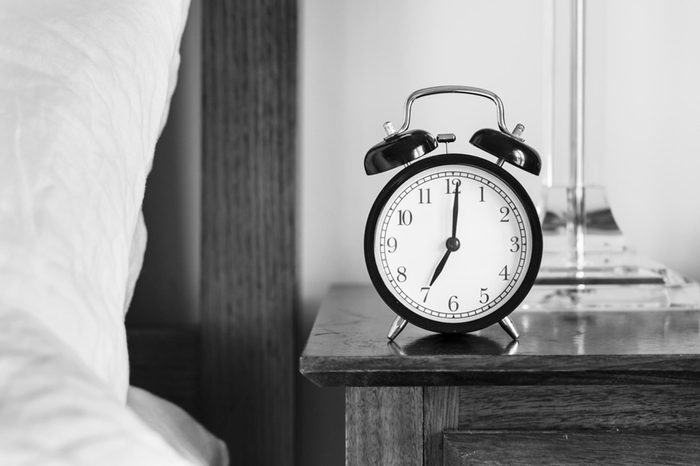
Daylight Saving Time
The idea of fiddling with the clock has been around since antiquity, but it was not until World War I that governments around the globe officially adopted daylight saving time. Why? To conserve resources such as fuel and extend the workday for the war effort. The Germans and Austro-Hungarians did it first, in 1916, and the Allies followed shortly after. To clear up confusion about the concept, the Washington Times used a comic strip to explain the first “spring forward” in the United States in 1918.
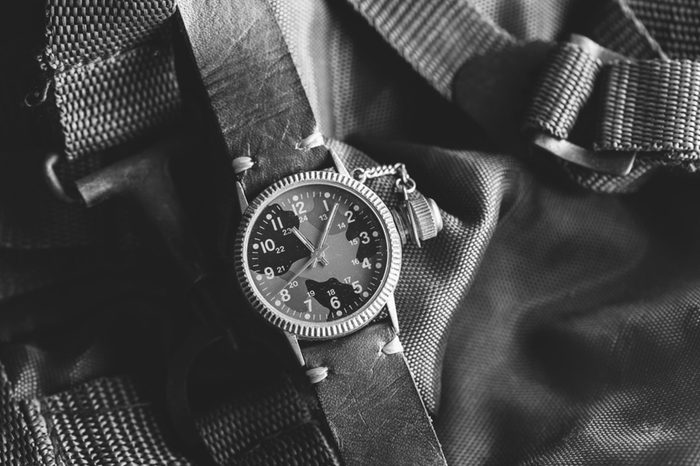
Wristwatches
Timepieces known as wristlets were sold during the 19th century. However, they failed to take off with men until World War I demonstrated their superiority to pocket watches in battle—particularly for military leaders who were coordinating precision attacks. By the war’s end, an entire generation of young men either had a wristwatch or wanted one for Christmas.
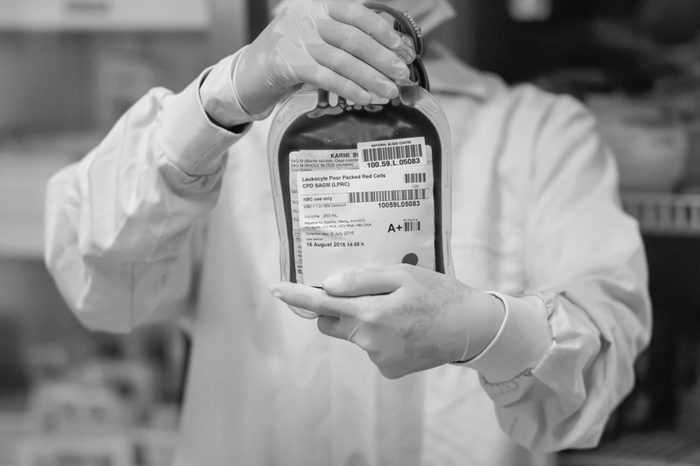
Blood Banks
Blood transfusions date back to the 1600s, but doctors rarely performed them before World War I, when they were accomplished by transfusing blood directly from one person to another. Capt. Oswald Robertson, a U.S. Army Reserve doctor consulting with the British army, recognized the need to stockpile blood before casualties occurred. In 1917, he helped establish the first blood bank on the western front. You’ll laugh out loud when you find out these hilarious military code names that were actually used.

Hollywood
With so much of Europe in the line of fire, the European film industry had to scale back dramatically. That opened the door for the Americans. Hollywood was still in its infancy, but its studios soon made fortunes producing wartime propaganda. The war itself provided material for countless movies in the 1920s and ’30s, including Wings, the winner of the first Academy Award for Best Picture.

Trench Coats
While Charles Macintosh invented weatherproof outerwear about a century before World War I, Burberry and Aquascutum modernized the design to keep British officers warm and dry. Today, many trench coats (yes, that’s why they’re called that) come with flaps and rings that were originally created for securing pistols, map cases, and even swords.
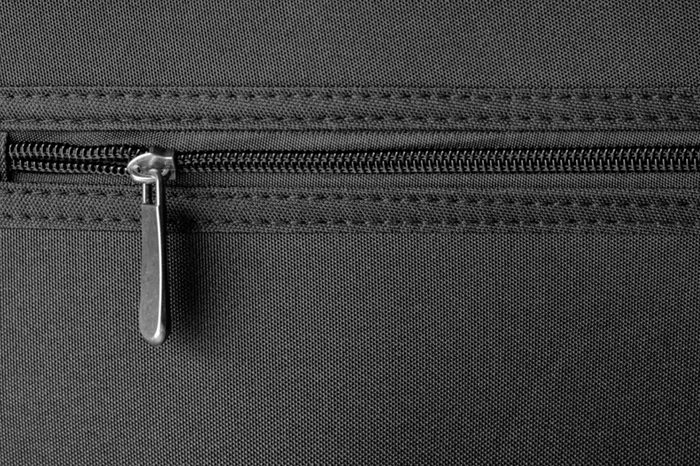
Zippers
Originally known as a slide fastener, the zipper wasn’t mass-produced until World War I, when the U.S. military requested them for flight suits and money belts, which were a necessity for U.S. sailors because their uniforms didn’t have pockets. Now that you know this, can you pass this U.S. war history trivia quiz that almost everyone fails?
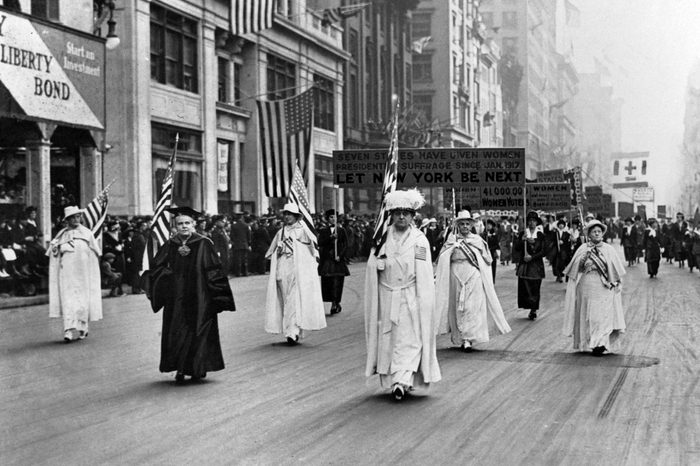
Women’s Suffrage
Suffragists had won victories throughout the western United States by 1917, but their support for and involvement in the war effort advanced their cause considerably. With the endorsement of President Woodrow Wilson, the Nineteenth Amendment to the U.S. Constitution was ratified in 1920.
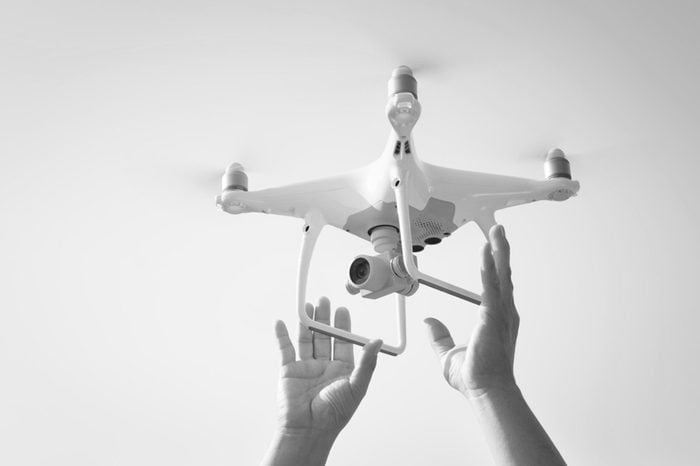
Drones
It’s hard to imagine drones in the skies just 15 years after the Wright brothers’ first flight at Kitty Hawk, North Carolina. Nevertheless, when the U.S. Navy tested the first Curtis N-9 Aerial Torpedo on March 6, 1918, unmanned aircraft became a reality. (Alas, the nation would have to wait almost a century for drones that could deliver pizza.) These are 22 words and phrases that were also invented in the military.
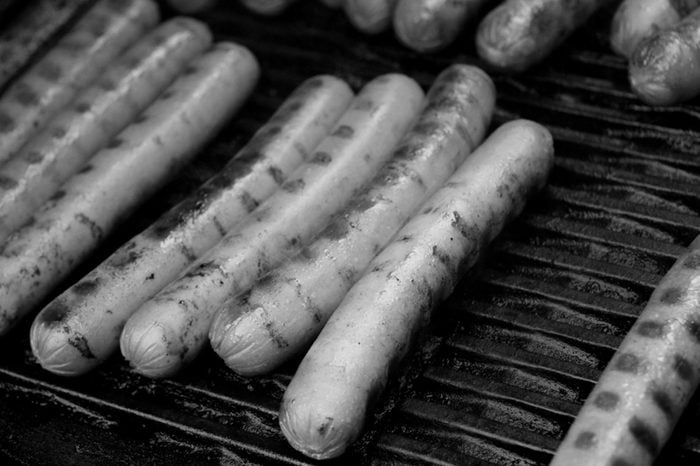
Soy dogs
In 1918, in Cologne, Germany, Mayor Konrad Adenauer applied for a patent for his novel way of preserving meat: mixing sausage with soy flour. Although not strictly vegetarian, the method had staying power. Soy products are now a multibillion-dollar industry in the United States alone.
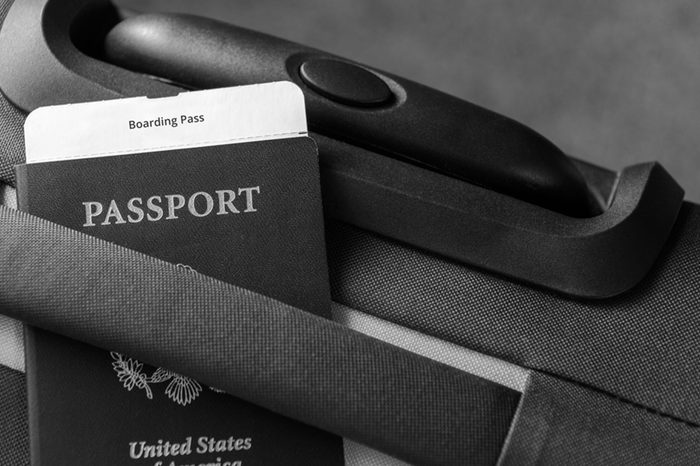
Modern passports
In hopes of restoring tourism throughout Europe, the League of Nations issued guidelines for uniform passports in 1920. The standard documents were to include a cover embossed with the issuing country’s name and coat of arms—the same basic look they have today in most every country, including the United States. Next, take a look at these hilarious inventions that failed spectacularly.
